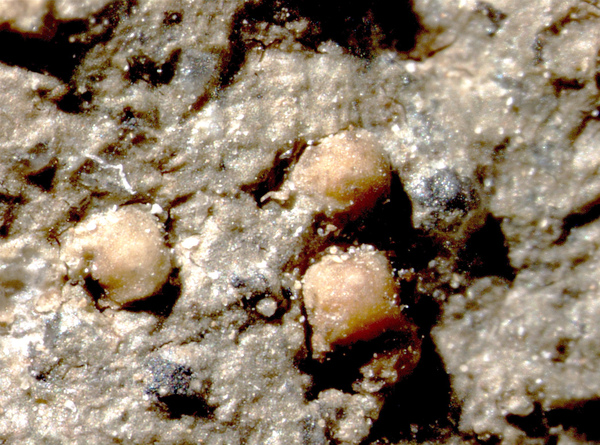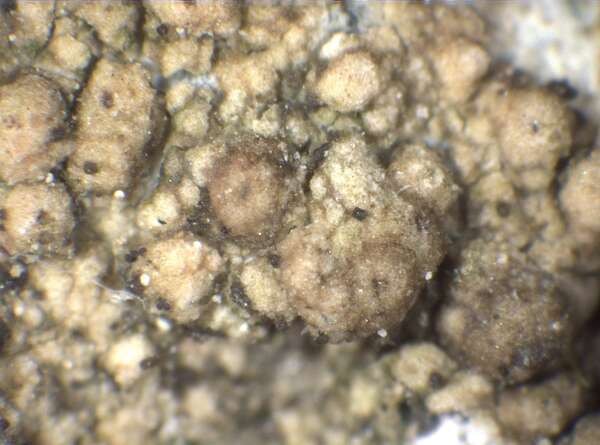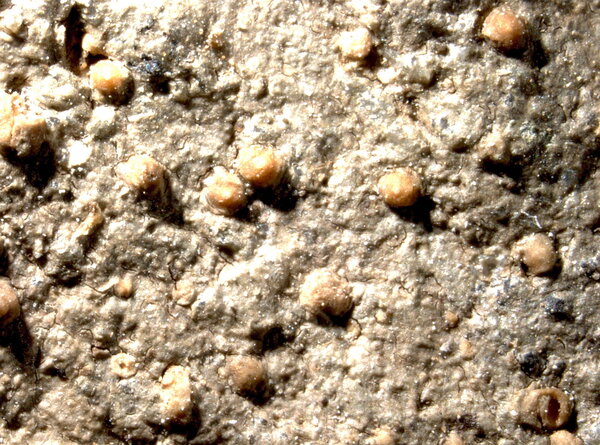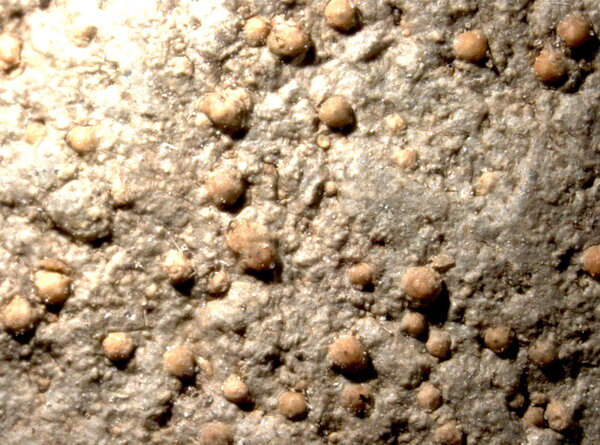Porina ahlesiana (Körb.) Zahlbr.
Cat. Lich. Univ., 8: 99, 1931. Basionym: Segestrella ahlesiana Körb. - Parerga Lichenol.: 324, 1865.
Synonyms: Porina globosa (Taylor) A.L. Sm.; Porina insiliens (Larbal.) A.L. Sm.; Porina insularis (Larbal.) A.L. Sm.; Porina septemseptata (Hepp ex Zwackh) Swinscow non (Kremp.) Zahlbr.
Distribution: N - Piem (TSB 32846). C - Tosc (Tretiach 2015o).
Description: Thallus crustose, episubstratic, continuous to irregularly cracked, pale olive-brown, greenish grey or pale yellowish brown. Perithecia hemispherical, semi-immersed in the thallus, pale orange-brown, translucent when wet, 0.3-0.5(-0.7) mm in diam., the ostiolar region at first reddish brown, then black. Involucrellum of thick-walled cells, containing several photobiont cells, yellowish brown in section (Porina-yellow pigment), K+ orange; exciple yellow; paraphyses simple or rarely branched; hymenial gel I-, K/I-. Asci 8-spored, cylindrical-clavate, thin-walled throughout, functionally unitunicate, I-, K/I-, the apex truncate and containing a refractive ring which stains with Congo Red. Ascospores (5-)7-septate, hyaline, 30-50(-70) x 6-12(-15) μm. Pycnidia pale grey-pink. Conidia 6-7 x c. 0.5 μm. Photobiont trentepohlioid. Spot tests: thallus K-, C-, KC-, P-, UV-. Chemistry: thallus without lichen substances.Note: a rare species of shaded-humid siliceous rocks, with a somehow western distribution in Europe and a wide altitudinal range.
Growth form: Crustose
Substrata: rocks
Photobiont: Trentepohlia
Reproductive strategy: mainly sexual
Commonnes-rarity: (info)
Alpine belt: extremely rare
Subalpine belt: extremely rare
Oromediterranean belt: absent
Montane belt: extremely rare
Submediterranean belt: absent
Padanian area: absent
Humid submediterranean belt: extremely rare
Humid mediterranean belt: extremely rare
Dry mediterranean belt: absent
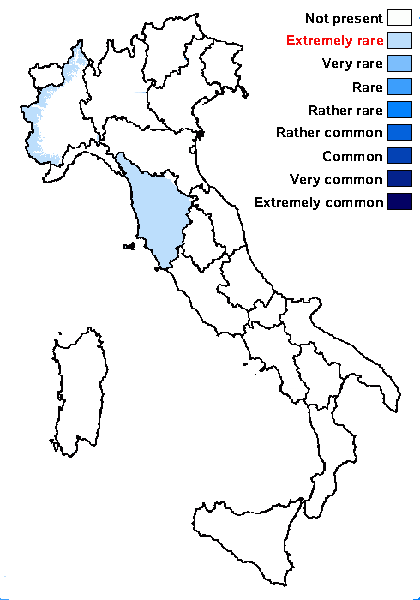
Predictive model
Herbarium samples
Growth form: Crustose
Substrata: rocks
Photobiont: Trentepohlia
Reproductive strategy: mainly sexual
Commonnes-rarity: (info)
Alpine belt: extremely rare
Subalpine belt: extremely rare
Oromediterranean belt: absent
Montane belt: extremely rare
Submediterranean belt: absent
Padanian area: absent
Humid submediterranean belt: extremely rare
Humid mediterranean belt: extremely rare
Dry mediterranean belt: absent

Predictive model
| Herbarium samples |
 INDEX FUNGORUM
INDEX FUNGORUM
 GBIF
GBIF
